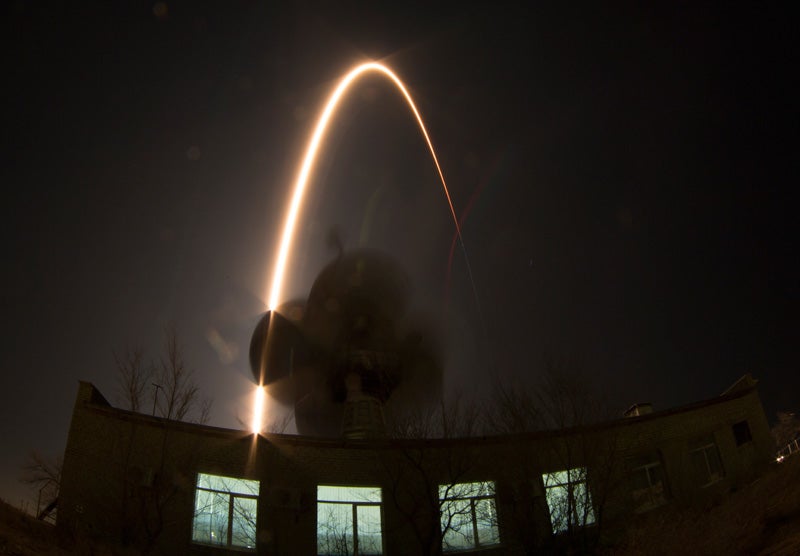We’re on a road to nowhere …
ListenScientists can now reliably calculate that the universe is expanding symmetrically, thanks to data from very big radio telescopes and very big optical scopes. Galaxies are growing further and further away from each other. Cracks in US/Russian space relations are beginning to show. A Russian official in frustration regarding US sanctions against Russia over the Ukraine turmoil, has suggested that perhaps NASA consider using trampolines to get its astronauts to ISS … though this is not the official stance of the Russian government or the Russian Space Agency. Jupiter, Mars, Saturn, Venus available to be seen in the night sky this week.
May 5, 2014
[Dave Heller] We Earthlings are hanging on for the ride launched by the Big Bang, and astronomers are getting a better sense of if not where we’re going, at least how fast we’re getting there. Let’s strap on seat belts and shoulder harnesses with Derrick Pitts, chief astronomer at the Franklin Institute. And Derrick, we’ve known for quite awhile that the universe continues to expand, and actually, at ever-faster rates. What’s new?
[Derrick Pitts] Well the new thing that we’re determining is that the universe has been expanding isotropically, that means at the same rate in all directions. So what we’ve been able to determine is that no matter which direction you go in in the universe, it all seems to have been expanding at the same rate, meaning no part of the universe has been expanding faster or slower than another part of the universe.
Now how is this determined?
Well it really is determined by measuring the rate at which galaxies have been receding at different parts around the universe. So we know, for example, that the most distant galaxies are receding at the highest rates, some at some 33% of the speed of light, which is remarkable even in its own. What we’re also seeing is that galaxies that are closer aren’t receding as quickly. So we can separate that to begin with: the more distant galaxies are receding faster than the closer galaxies. The next thing that we would want to know is are those rates of recession consistent for distance across the entire universe? If we find that there’s a difference, it would tell us that one part has been expanding faster than another.
Is it useful to consider the Big Bang as a point and now we’re a balloon that continues to enlarge?
Yes, you can think of it that way. And the one thing that you have to keep in mind is that it’s not that the galaxies are rushing outward in to a void that already exists. What’s actually happening is that the universe is expanding, and the expansion of the universe drags the galaxies along with it. So to go with your balloon analogy, it’s as if before the balloon has been inflated, you draw dots on the balloon. Then as you blow up the balloon, the dots on the balloon spread apart from each other farther and farther because the balloon is expanding, not that the galaxies themselves are rushing away off of the balloon.
Is it logical to conjecture that an endpoint is such that as everything gets further and further away from everything else, there’ll be virtually nothing?
Yes, you can think of it that way. The other thing that you have to throw in though, of course, is the second law of thermodynamics. Which is that, unless you continue to induce energy into the system, everything is going to run down. So all of these galaxies — a couple things will happen. The most distant galaxies have already run out of energy from their stars and they’re already dead and gone. They still look alive to us because we’re still receiving light from them. So that’s the first part, that they will eventually die out and disappear. The second part, though, is that as these distant galaxies get farther and farther away, the amount of time for their light to reach the Earth exceeds the amount of time we’ve been here already. So, we will never be able to catch up with those galaxies as they continue to recede; their light will disappear, we won’t be able to see them anymore. And as this continues to expand, we’ll see fewer and fewer galaxies.
“The most distant galaxies have already run out of energy from their stars and they’re already dead and gone. They still look alive to us because we’re still receiving light from them.”
Derrick Pitts
Let’s move on from the laws of physics to law and politics, and how that pertains to ISS and US / Russia relations.
When the US decided that it was necessary for us to institute sanctions, financial sanctions, against Russia for the turmoil that’s taking place in the Ukraine, some asked the question of whether or not that would affect US / Russian space relations. The answer to that was no — everything would continue as expected, the space agency collaborations would continue unabated without any injury. However, it has now come to light that one Russian official has said that perhaps NASA should consider using trampolines to get its astronauts to International Space Station if we want to enforce these sanctions. Now, this isn’t the policy of either the Russian government or the Russian space agency, but it does point to the immediate need for the United States to do what it can to build up its launch capability to reach International Space Station in case something should fail in US / Russian space relations. The chances of that occurring though are very, very slim because the Russian space agency is just as dependent on the American space agency for maintenance of International Space Station, as the US is dependent on Russia to bring astronauts to International Space Station. So it’s not a win-win situation for Russia to deny us access to their launch vehicles to take astronauts to Space Station, because they are still so much dependent on our operations and supplies as well.
Sounds more like a case of trampoline if not saber rattling.
I would say that’s probably much more accurate; the likelihood of which is things will continue as they have been for decades.
-

In this photo taken with a fisheye lens and long exposure, the Soyuz-FG rocket booster with Soyuz TMA-12M space ship carrying a new crew to the International Space Station (ISS) blasts off over an antenna at the Russian leased Baikonur cosmodrome, Kazakhstan, Wednesday, March 26, 2014. The Russian rocket carries U.S. astronaut Steven Swanson, Russian cosmonauts Alexander Skvortsov and Oleg Artemyev. (AP Photo/Dmitry Lovetsky)
Derrick, we have a moment left: What’s available to be seen in the Cinco de Mayo sky?
Great planets on Cinco de Mayo. Of course, we have Jupiter in the evening just after sunset in the west. If we look over on the eastern horizon about the same time, we’ll see Mars already above the horizon. A little bit later in the evening, another couple of hours, Saturn makes its way up. That takes care of the evening. If you’re up in the morning, say before sunrise, 5:45, you’ll see over in the west Mars on the western horizon; Saturn further around to the south and over in the east just above the horizon, brilliant Venus.
WHYY is your source for fact-based, in-depth journalism and information. As a nonprofit organization, we rely on financial support from readers like you. Please give today.




